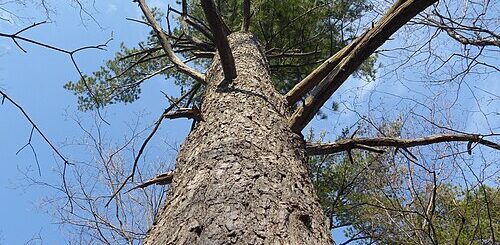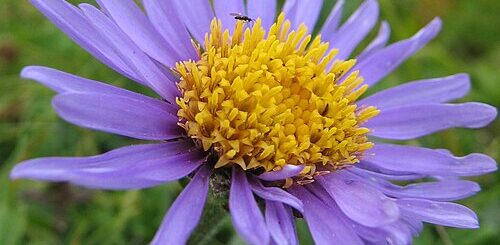Bear’s Breeches Plant – The Beauty of the Mediterranean Garden
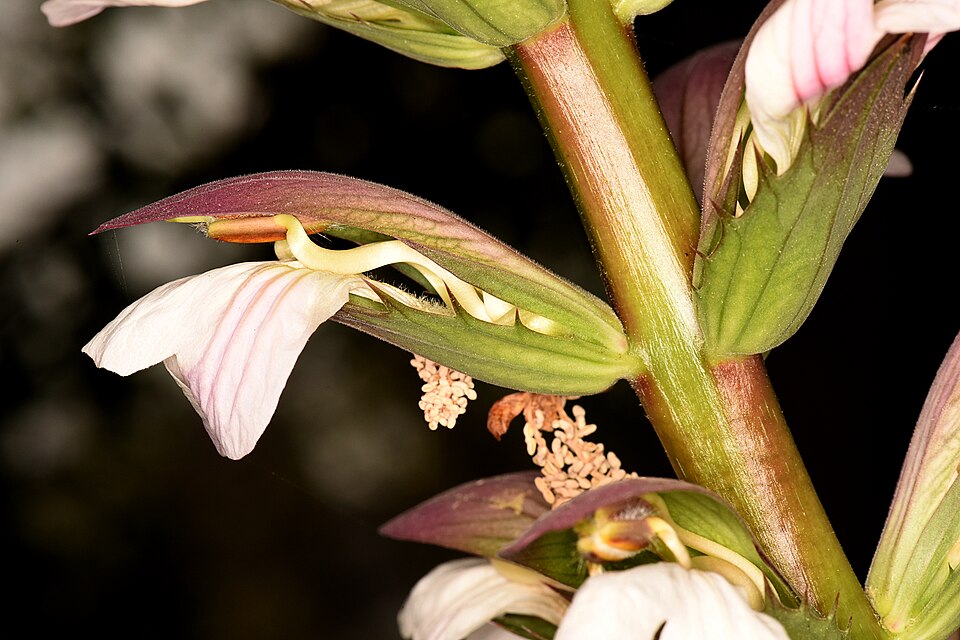
When it comes to making a dramatic statement in the garden, few plants rival the bold flair of Bear’s Breeches (Acanthus mollis), also known as sea dock, bear’s foot plant, sea holly, gator plant or oyster plant. With its large, deeply lobed leaves and tall flower spikes, this Mediterranean native brings an old-world charm and architectural elegance to any landscape. Whether you’re an avid gardener or just starting to explore the world of plants, Bear’s Breeches is a stunner worth getting to know.

Bear’s Breeches – S. Bernardo, Genova, Italy – Creative Commons | Author: Hectonichus – Source: https://commons.wikimedia.org/wiki/File:Acanthaceae_-_Acanthus_mollis_(2).JPG
What Are Bear’s Breeches?
Despite the quirky name (which may or may not make you giggle), Bear’s Breeches is a plant steeped in history. Its scientific name, Acanthus mollis, comes from the Greek word akantha, meaning “thorn,” though the plant isn’t particularly spiny. The “mollis” refers to its soft leaves, which contrast with the tougher look of the flower stalks.
Native to the Mediterranean region, Bear’s Breeches is a perennial herbaceous plant that grows in clumps. Its large, glossy, dark green leaves form a lush base, while tall spires, sometimes reaching up to 5 feet, shoot up in summer, crowned with hooded flowers in shades of white, purple, and pink.
A Plant with Pedigree
This isn’t just any garden perennial. Bear’s Breeches has been immortalized in art and architecture for centuries. The leaf shape famously inspired the design of Corinthian columns in ancient Greek and Roman architecture. So when you plant Bear’s Breeches, you’re not just gardening, you’re continuing a legacy!
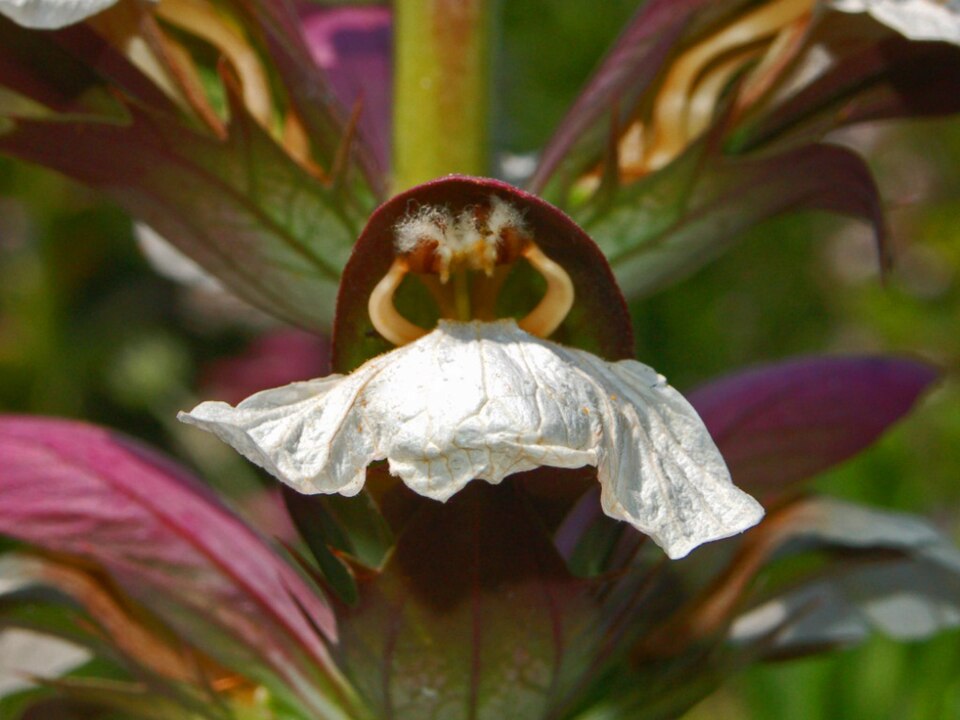
Close-up of stamens – Creative Commons | Author: Hectonichus – Source: https://commons.wikimedia.org/wiki/File:Acanthaceae_-_Acanthus_mollis-2.JPG
Growing Tips
Bear’s Breeches thrives in USDA zones 6–10 and prefers well-draining soil. It’s drought-tolerant once established, which makes it perfect for xeriscaping or low-water gardens.
Here’s what it needs to be its best:
Light: Full sun to partial shade. In hotter climates, it appreciates a bit of afternoon shade.
Water: Moderate water needs. Keep the soil moist but not soggy during its growing season.
Soil: Well-drained with a neutral to slightly alkaline pH.
Maintenance: Cut back flower stalks after blooming to tidy things up. If the leaves get ratty in the summer heat, trim them back and new growth will follow.
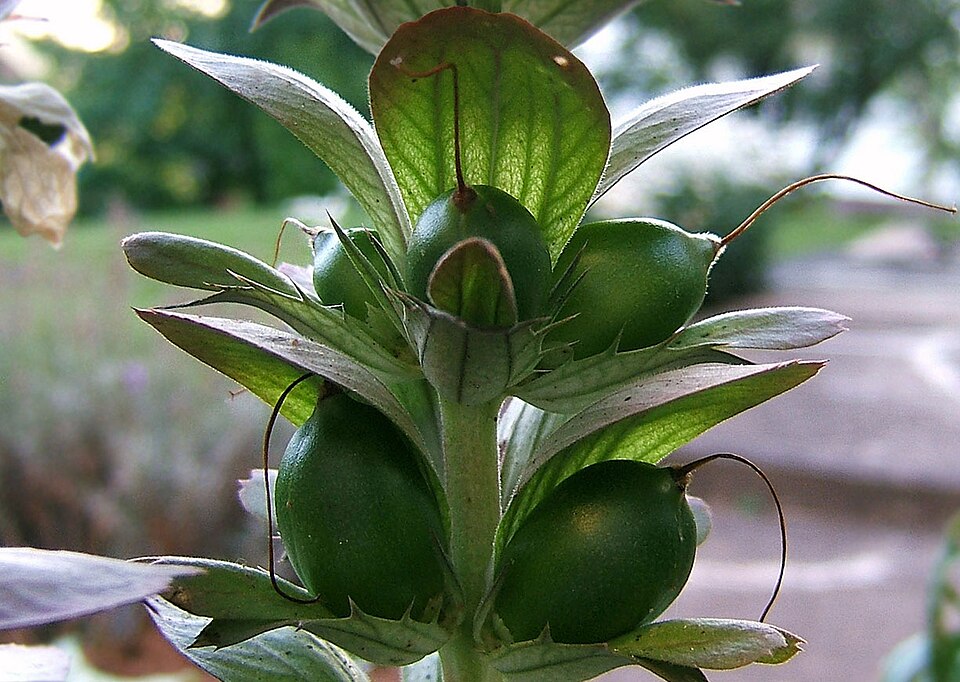
Bear’s Breeches Fruit – Creative Commons | Author: Wildfeuer – Source: https://commons.wikimedia.org/wiki/File:2007-07-13Acanthus09.jpg
A Few Caveats
Bear’s Breeches can be a bit of a garden diva. Once it’s happy, it’s really happy, sometimes spreading aggressively through underground rhizomes. It’s not invasive, but it does like to claim its space. If you’re worried about it getting too comfy, consider planting it in a contained area or giving it regular root maintenance.
Also worth noting: the leaves and stems can cause mild skin irritation for some people, so gloves are a good idea when handling it.
Companion Plants and Design Ideas
Bear’s Breeches plays well with others, especially with plants that let it shine. Pair it with:
– Ornamental grasses
– Lavender
– Rosemary
– Salvia
– Hostas (for shadier spots)
It also makes a dramatic focal point in a mixed border or as a backdrop to smaller perennials. In formal gardens, it brings a timeless elegance; in cottage gardens, it adds an unexpected twist of structure.
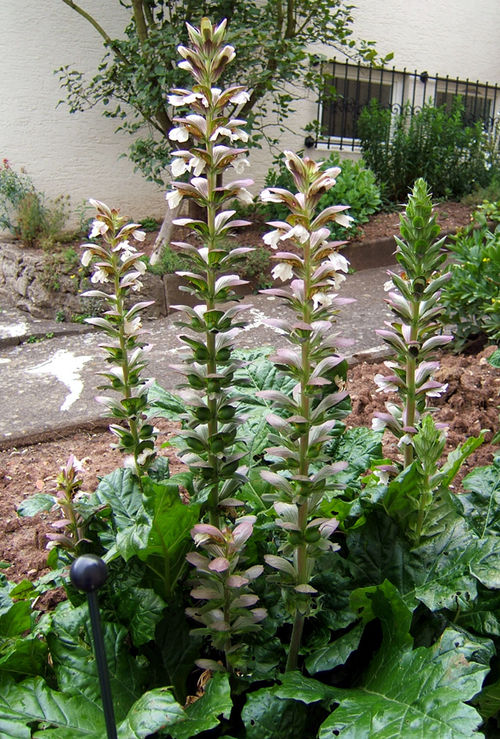
Bear’s Breeches – Creative Commons | Author: Wildfeuer – Source: https://commons.wikimedia.org/wiki/File:2007-06-26Acanthus06.jpg
Bear’s Breeches is a Showstopper
Whether you’re drawn to its historical roots, its sculptural presence, or its low-maintenance nature, Bear’s Breeches is a showstopper that earns its spot in the garden. Just give it a little room, some sun, and a bit of respect and it’ll reward you with seasons of beauty.
Have you grown Bear’s Breeches before? Share your experience, or your favorite garden showstopper, in the comments!
References:
https://en.wikipedia.org/wiki/Acanthus_mollis

